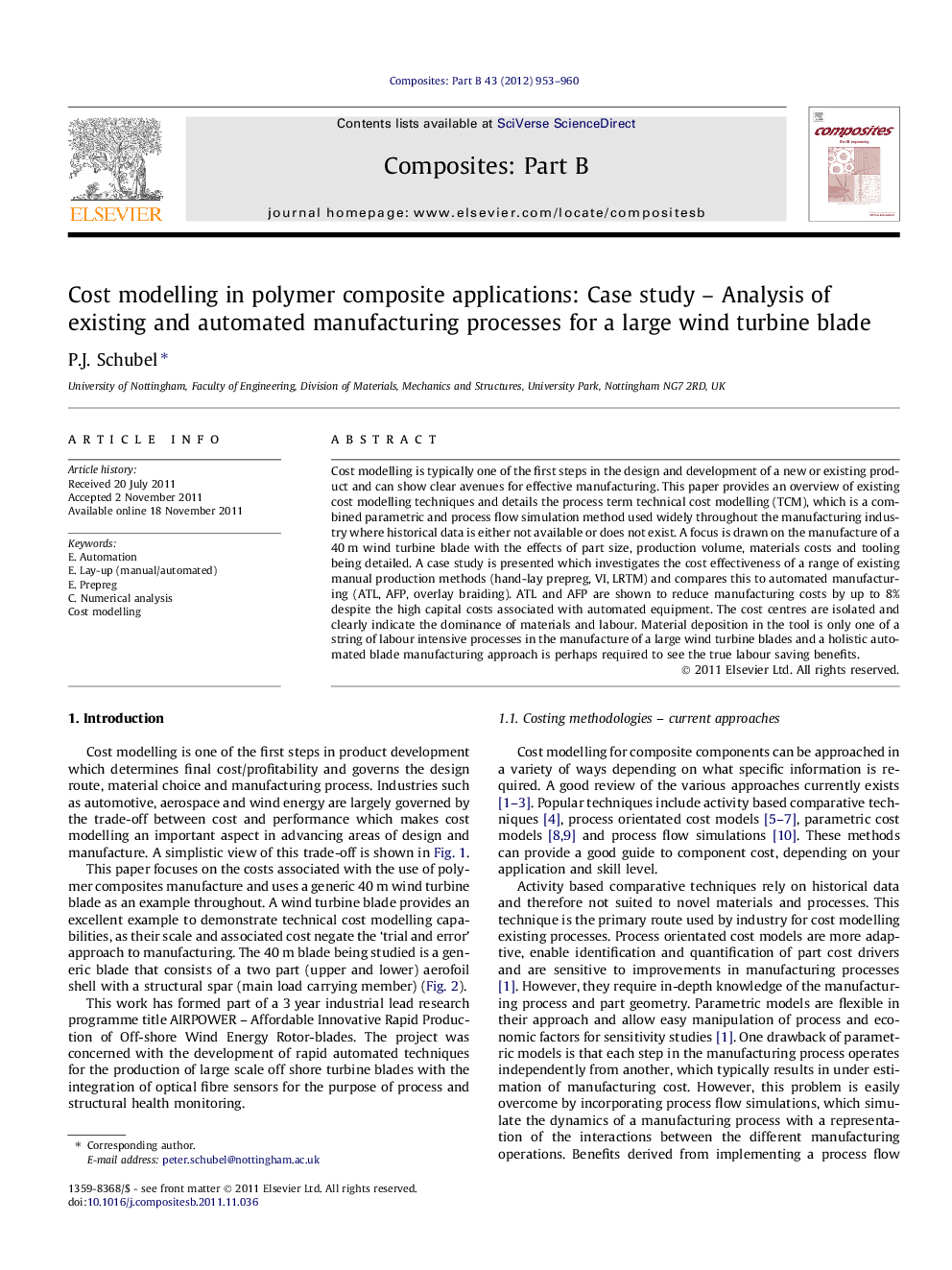| Article ID | Journal | Published Year | Pages | File Type |
|---|---|---|---|---|
| 818596 | Composites Part B: Engineering | 2012 | 8 Pages |
Cost modelling is typically one of the first steps in the design and development of a new or existing product and can show clear avenues for effective manufacturing. This paper provides an overview of existing cost modelling techniques and details the process term technical cost modelling (TCM), which is a combined parametric and process flow simulation method used widely throughout the manufacturing industry where historical data is either not available or does not exist. A focus is drawn on the manufacture of a 40 m wind turbine blade with the effects of part size, production volume, materials costs and tooling being detailed. A case study is presented which investigates the cost effectiveness of a range of existing manual production methods (hand-lay prepreg, VI, LRTM) and compares this to automated manufacturing (ATL, AFP, overlay braiding). ATL and AFP are shown to reduce manufacturing costs by up to 8% despite the high capital costs associated with automated equipment. The cost centres are isolated and clearly indicate the dominance of materials and labour. Material deposition in the tool is only one of a string of labour intensive processes in the manufacture of a large wind turbine blades and a holistic automated blade manufacturing approach is perhaps required to see the true labour saving benefits.
